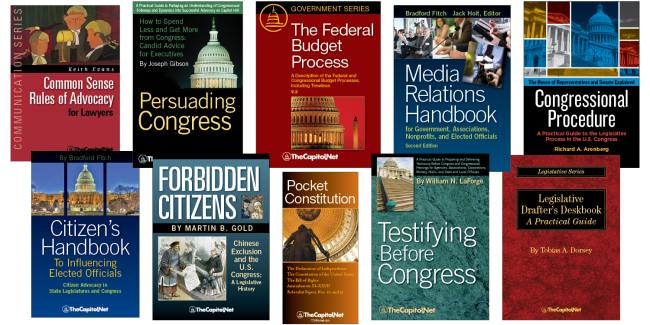From the Congressional Glossary – Including Legislative and Budget Terms
President’s Budget

The document sent to Congress by the President in January or February of each year, as required by law (31 U.S.C. § 1105), requesting new budget authority for federal programs and estimating federal revenues and outlays for the upcoming fiscal year and 4 subsequent out years. Although the title of the document is Budget of the U.S. Government (FDsys) (Govinfo.gov), it represents proposals for congressional consideration.
2018-003 Hearing: The President’s Fiscal Year 2019 Budget
The principal volumes currently part of the president’s annual budget submission include:
- Budget (officially the Budget of the United States Government) (FDsys) – includes the president’s budget message, presentations on the president’s major budgetary initiatives organized by department and major agencies (or, in some years, by budget function), discussions of management initiatives and performance data, and summary tables.
- Appendix (OMB) – sets forth detailed information for accounts within each department and agency, including funding levels, program descriptions, proposed appropriations language, and object classification and employment data.
- Analytical Perspectives (OMB) – contains analyses and information on specific aspects of the budget or budget-related areas, such as budget and performance integration, economic assumptions, and current services estimates; crosscutting programs, such as research and development, federal investment, and aid to state and local governments; and budget process reform proposals.
- Historical Tables (OMB) – provides data, covering an extended time period, on receipts, budget authority, outlays, deficits and surpluses, federal debt, and other matters.
Within a few days of the submission of the budget, the president also transmits an annual Economic Report of the President to Congress (FDsys) (Govinfo.gov), which includes the report of the Council of Economic Advisers. The president is required by law to update his submissions, and he does this in a far briefer, more summary fashion in his Mid-session Review, which is due by July 15.
Trump’s budget: Where are the spending cuts?
Online access to the president’s budget documents is available in several places, including the Office of Management and Budget web site, GPO’s Federal Digital System (FDsys), and Govinfo.gov.
See also
- Budget Deficit / Budget Surplus
- Byrd Rule
- Office of Management and Budget (OMB)
- OMB Circular No. A-11
- Guide to Understanding the Presidential Budget
- § 7.40 Presidential Budget Process, § 8.20 Congress and the Executive: Legislation, in Congressional Deskbook
- Chapter 7. The Congressional Budget and Other Special Cases in Congressional Procedure
Budget Formulation and Review
More
- “Roles of the President’s White House economic advisors“
- A Guide to Understanding the Presidential Budget
- The President’s Budget – OMB
- Budget of the United States Government – Govinfo.gov
- Budget of the U.S. Government – USA.gov
- “The Role of the President in Budget Development,” CRS Report RS20179 (5-page PDF
 )
) - “The Mid-Session Review of the President’s Budget: Timing Issues,” CRS Report RL32509 (19-page PDF
 )
) - “Reducing the Budget Deficit: The President’s Fiscal Commission and Other Initiatives,” CRS Report R41784 (28-page PDF
 )
) - “Uncertainty in Budget Projections,” CRS Report RL30854 (18-page PDF
 )
) - “The Executive Budget Process Timetable,” CRS Report RS20152 (8-page PDF
 )
) - “The Congressional Budget Process Timetable,” CRS Report 98-472 (8-page PDF
 )
) - “The Congressional Budget Process: A Brief Overview,” CRS Report RS20095 (12-page PDF
 )
) - “Budget Process and Enforcement,” Parliamentary Boot Camp (4-page PDF
 )
) - “Submission of the President’s Budget in Transition Years,” CRS Report RS20752 (13-page PDF
 )
) - “Budget Submission After a Presidential Transition: Contextualizing the Biden Administration’s FY2022 Request,” CRS Insight IN11655 (5-page PDF
 )
)
Courses
- Congressional Operations Briefing – Capitol Hill Workshop
- Drafting Federal Legislation and Amendments
- Writing for Government and Business: Critical Thinking and Writing
- Custom Training
- Congressional Operations Poster, with Federal Budget Process Flowchart
- Federal Budgeting, a Five-Course series on CD
- Congress, the Legislative Process, and the Fundamentals of Lawmaking Series, a Nine-Course series on CD
Publications
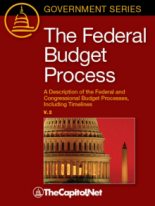
The Federal Budget Process 2E |
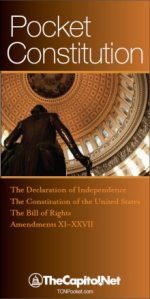
Pocket Constitution |
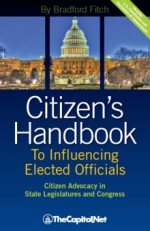
Citizen’s Handbook to Influencing Elected Officials: A Guide for Citizen Lobbyists and Grassroots Advocates |
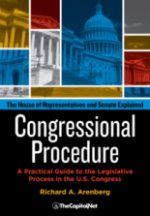
Congressional Procedure |
CongressionalGlossary.com, from TheCapitol.Net
For more than 40 years, TheCapitol.Net and its predecessor, Congressional Quarterly Executive Conferences, have been teaching professionals from government, military, business, and NGOs about the dynamics and operations of the legislative and executive branches and how to work with them.
Our custom on-site and online training, publications, and audio courses include congressional operations, legislative and budget process, communication and advocacy, media and public relations, testifying before Congress, research skills, legislative drafting, critical thinking and writing, and more.
TheCapitol.Net is on the GSA Schedule, MAS, for custom on-site and online training. GSA Contract GS02F0192X
TheCapitol.Net is now owned by the Sunwater Institute.
Teaching how Washington and Congress work ™

